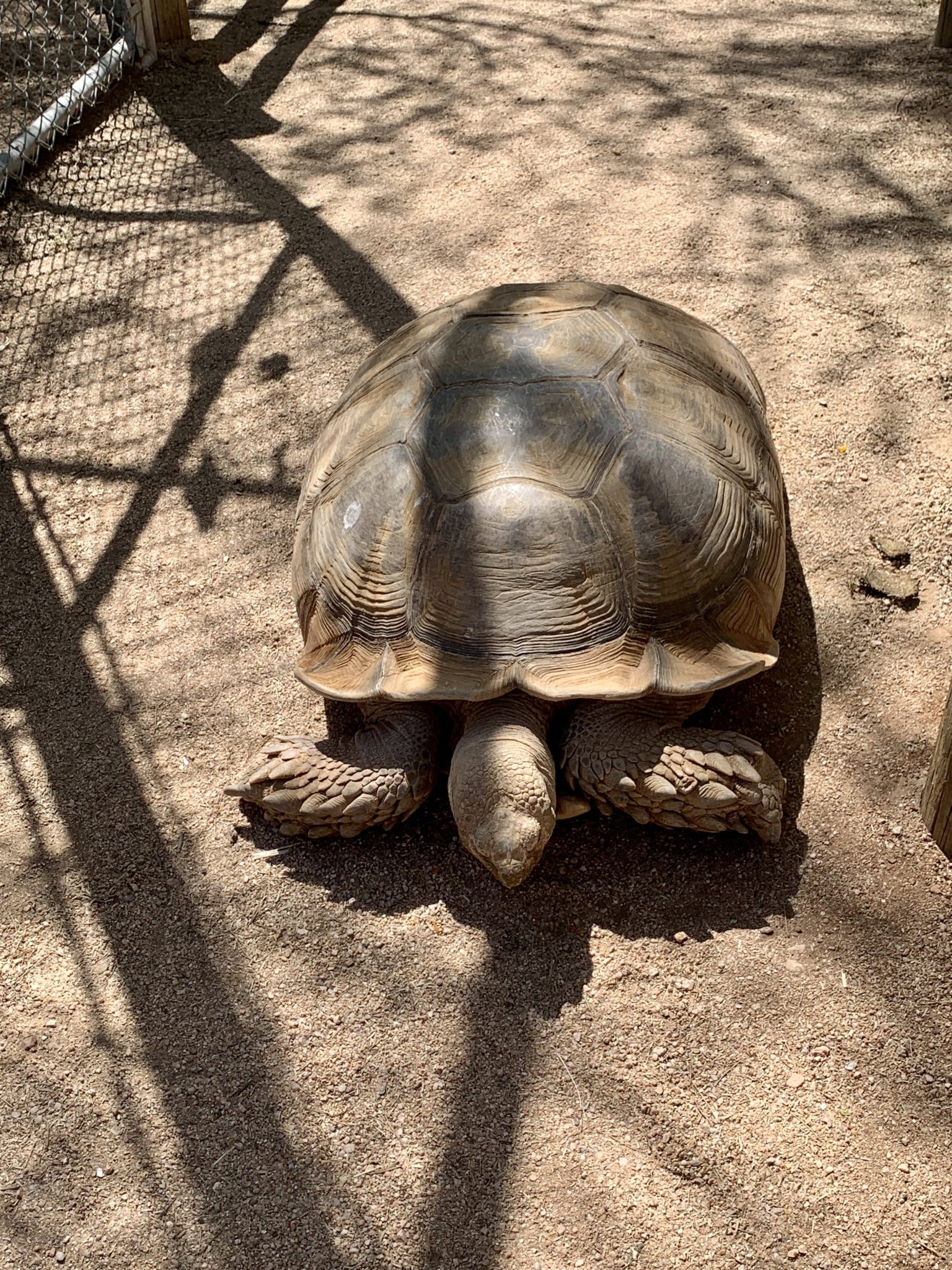
It’s hard to take good photos through a chain link fence. My apologies. I thought about not posting at all but wanted to introduce you to the Southwest Wildlife Conservation Center. The center was founded in 1994 by Linda Searles whose vision was to provide a home for animals

It’s hard to take good photos through a chain link fence. My apologies. I thought about not posting at all but wanted to introduce you to the Southwest Wildlife Conservation Center.
The center was founded in 1994 by Linda Searles whose vision was to provide a home for animals that could not be returned to their lives in the wild. The usual alternative: euthanasia.
From the web site:
Southwest Wildlife Conservation Center (SWCC) rescues native wild animals that have lost their homes to development, or are found injured, orphaned, or abandoned. When possible, the animals in our care are rehabilitated and released — healthy and wild — back where they belong.
Those animals that could not survive in the wild can live out their lives at our accredited sanctuary. We don’t buy, breed, sell or trade animals, nor are the animals for hire or used for commercial purposes.
SWCC
The animals you’ll see are lifers. When a litter of sixteen baby coyotes are taken to the wild and two refuse to leave their cages, they are assured a safe and interesting life at SWCC.
Why “interesting”? Have you ever been to a zoo and seen animals walking round and round in a circle, or back and forth, or licking themselves until bald, raw patches appear? Boredom.
At SWCC, groups of experts and volunteers work together to design and build toys and other challenges to provide variety. (“Can you get the food out of the pumpkin?”) Also, as you will see, the cages are very large and residents are paired with compatible roommates whenever possible.
SWCC is a 45-minute drive to the northeast of our condo. Advance purchase tickets are required.
The first photo shows the veterinary clinic.
In the following photo, we see the well-exposed gift shop and our guide, Lori, as a silhouette.

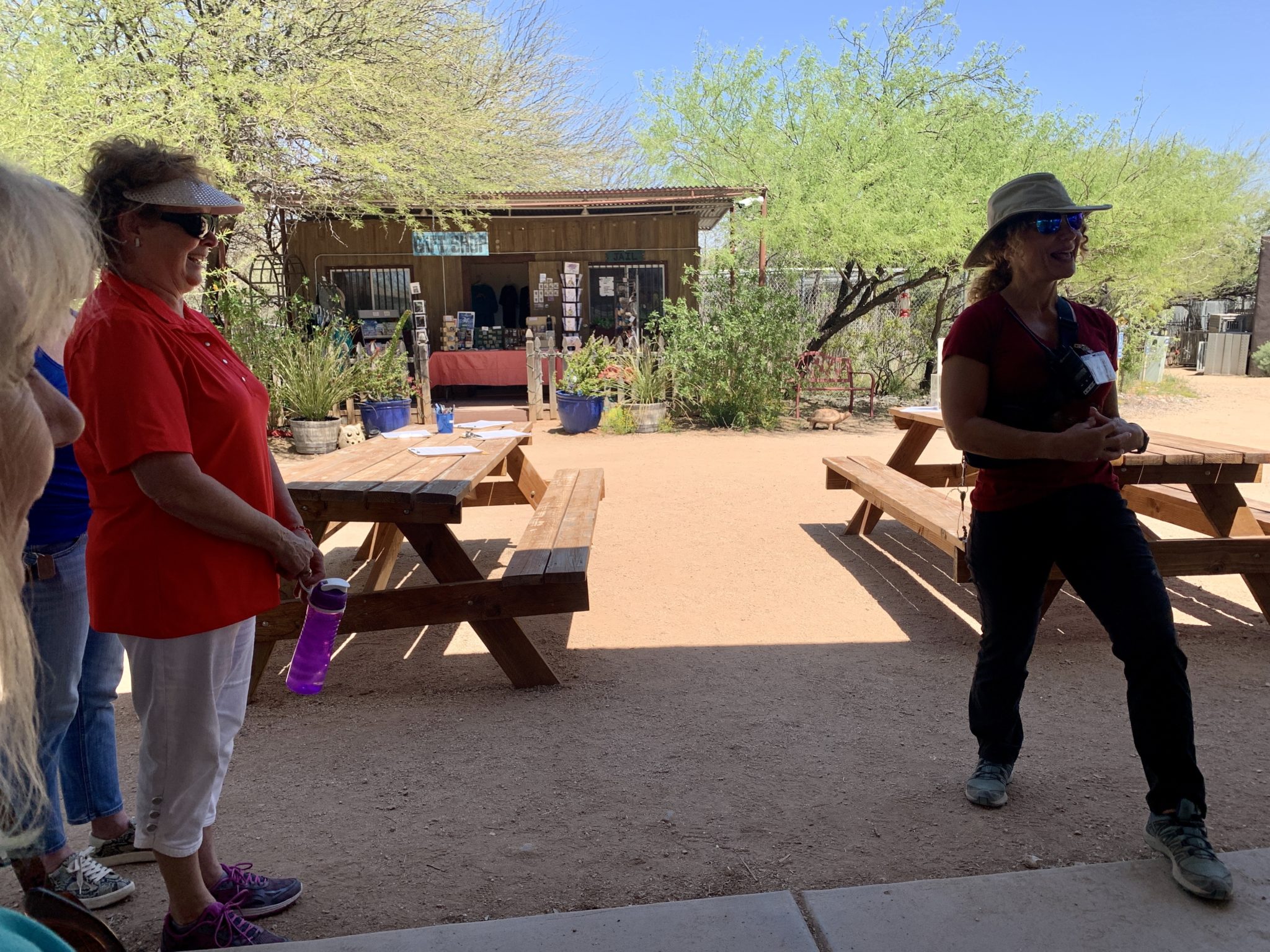
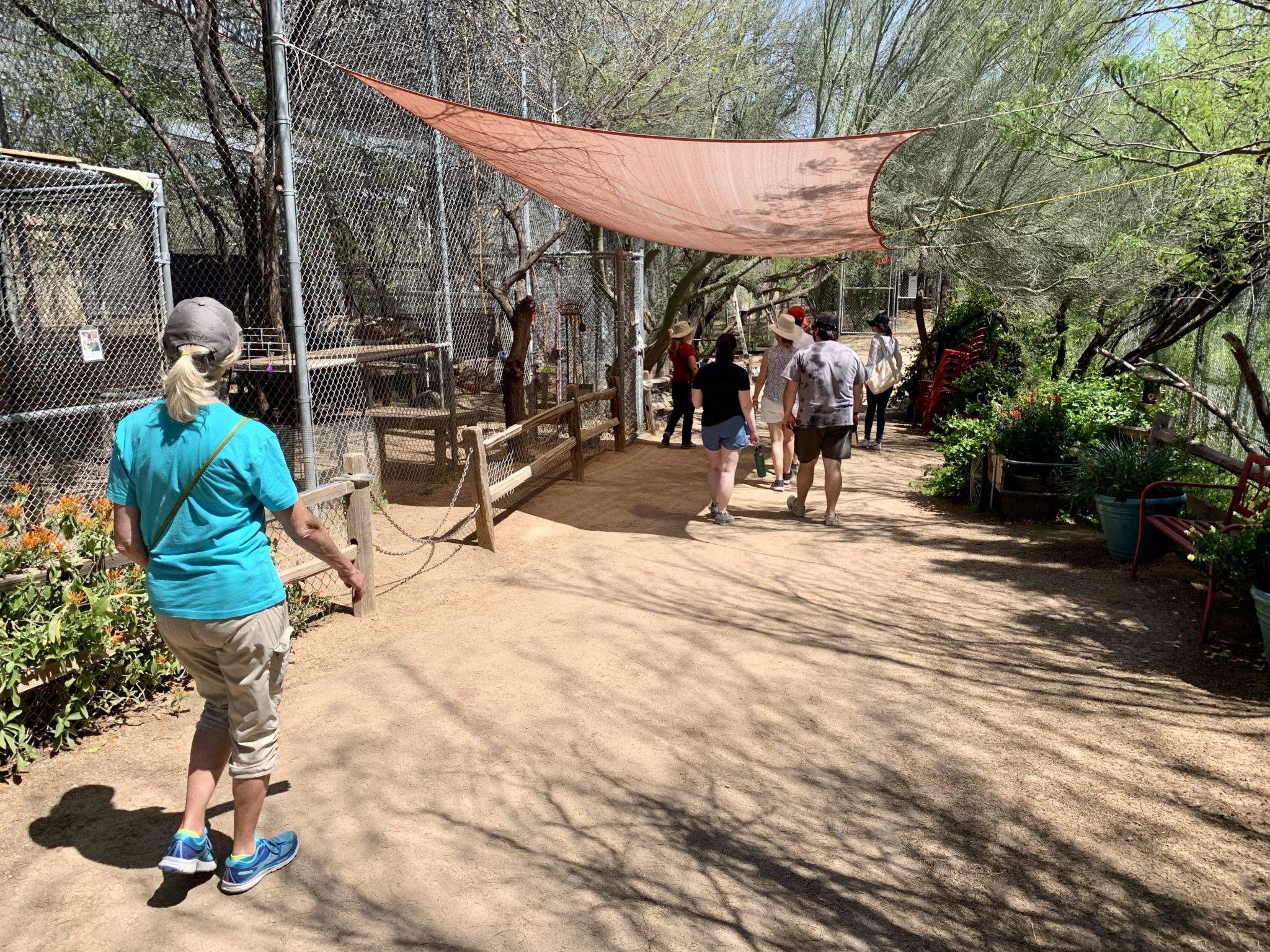
These coyotes were very much into treats. You might say that giving them treats is bad, just like giving nuts to chipmunks at Grand Canyon is bad. But remember, these guys, due to other circumstances, were already too imprinted on humans to survive in the wild.
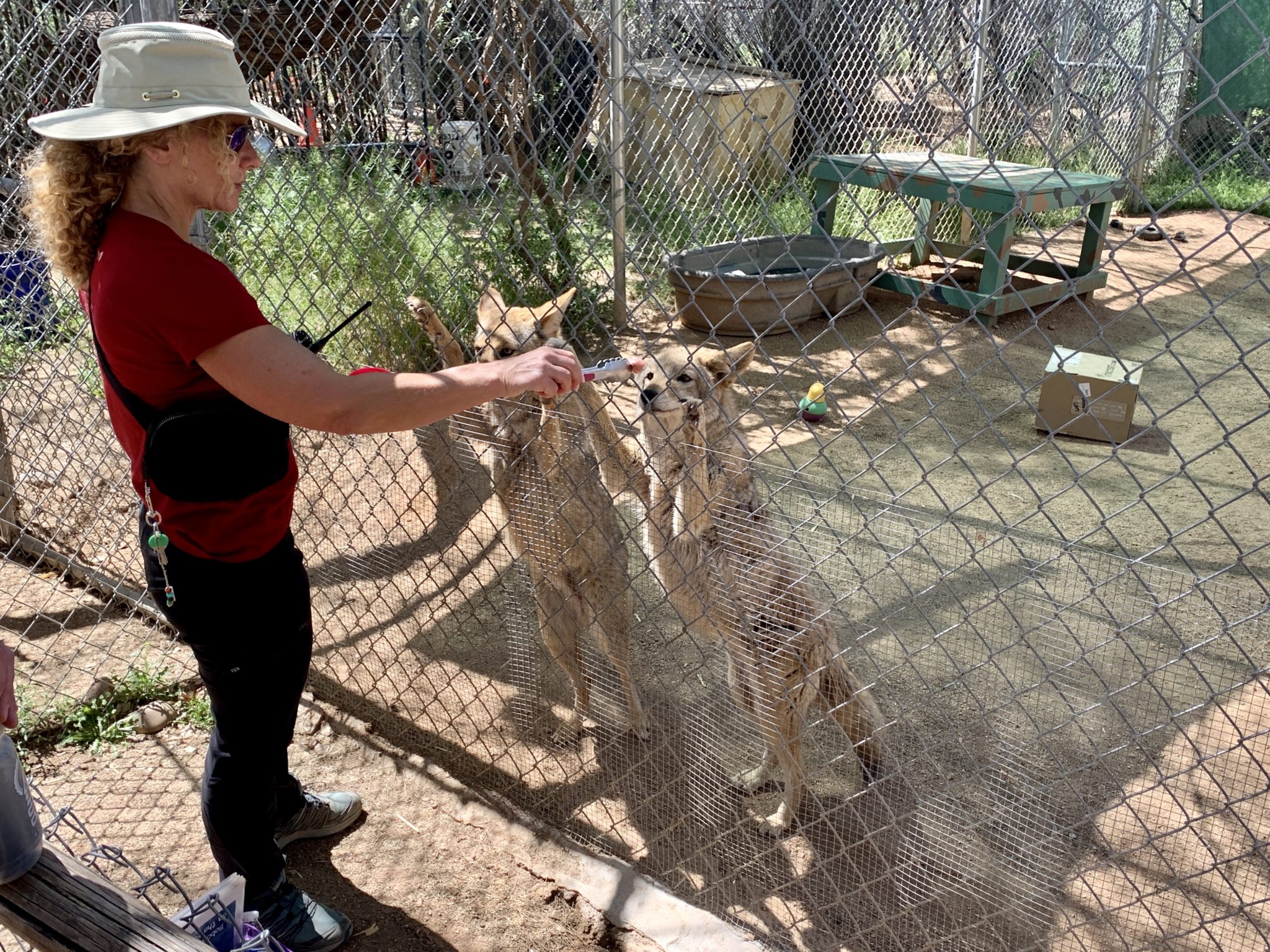
The foxes were also ready to scarf down treats. Their cousin was less interested.
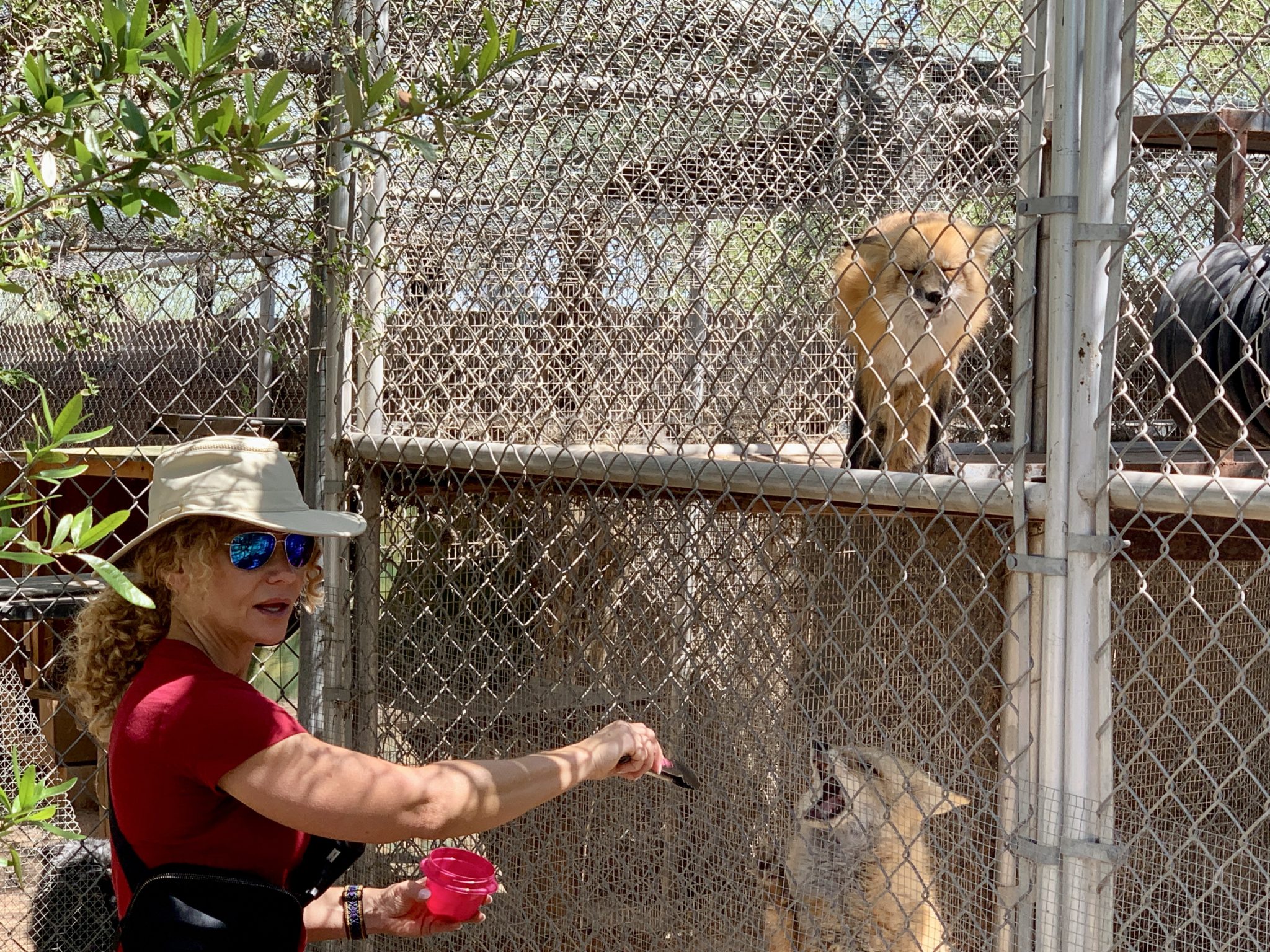

Is this handsome fellow lounging in the sun a puma, a cougar, or a mountain lion? Yes. All three are names for the same animal. You are unlikely to see one while hiking or biking. If the animal doesn’t want to be seen, you won’t. If it’s stalking you, you won’t.
Fun fact: despite their size, pumas are more like domestic cats than you might expect. For one thing, they say “meow”.
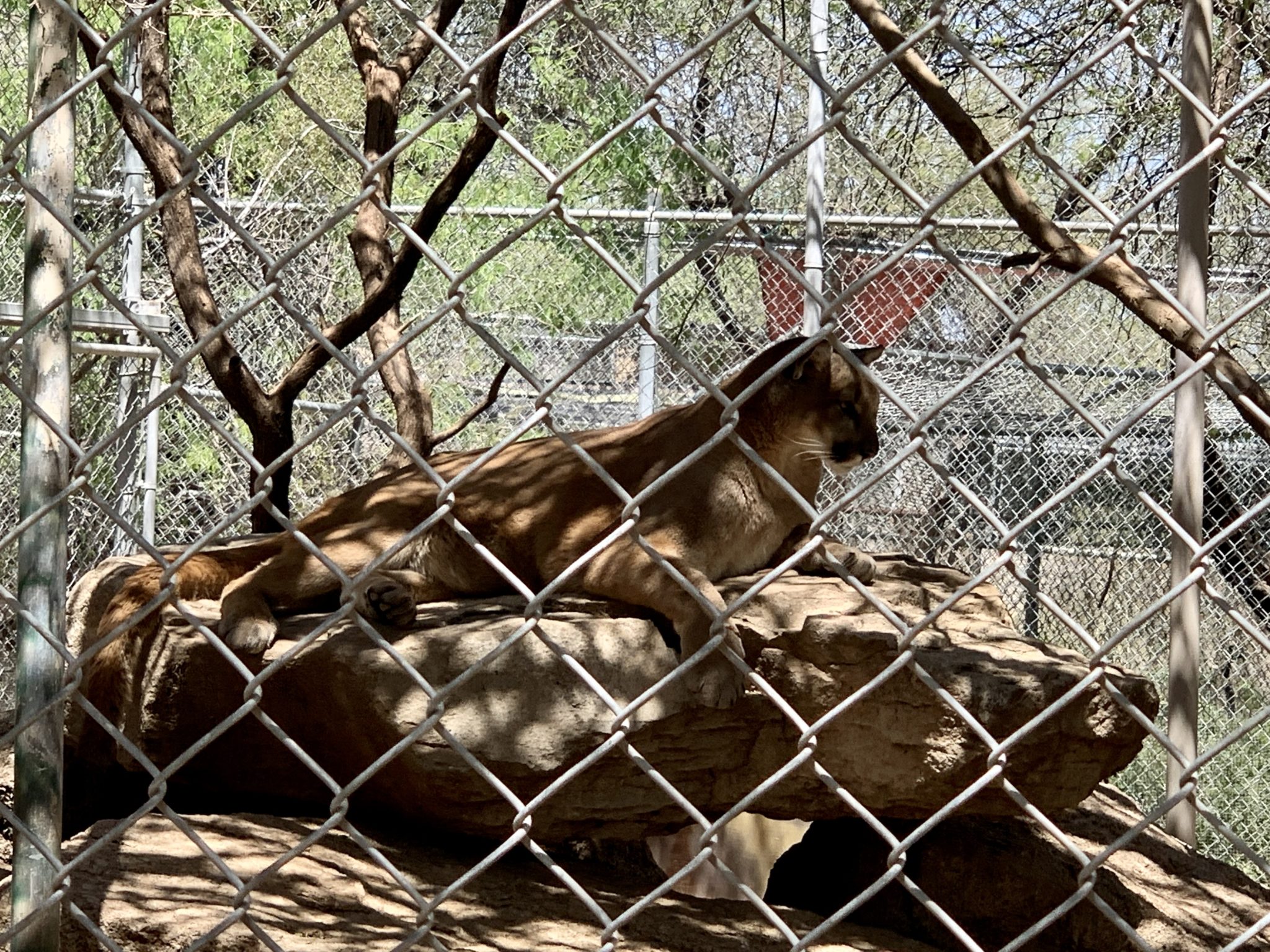
A desert tortoise avoids the heat.
A useful tip: sometimes people see one of these slow-moving reptiles crossing a highway and decide to help by picking up the animal and carrying it to the roadside. This act of kindness can be a death sentence. Tortoises store water in their shells. When frightened (”Holy crap, I’m flying!”) they may release the water. Unless there is a fresh water supply very near, the tortoise may die of dehydration.
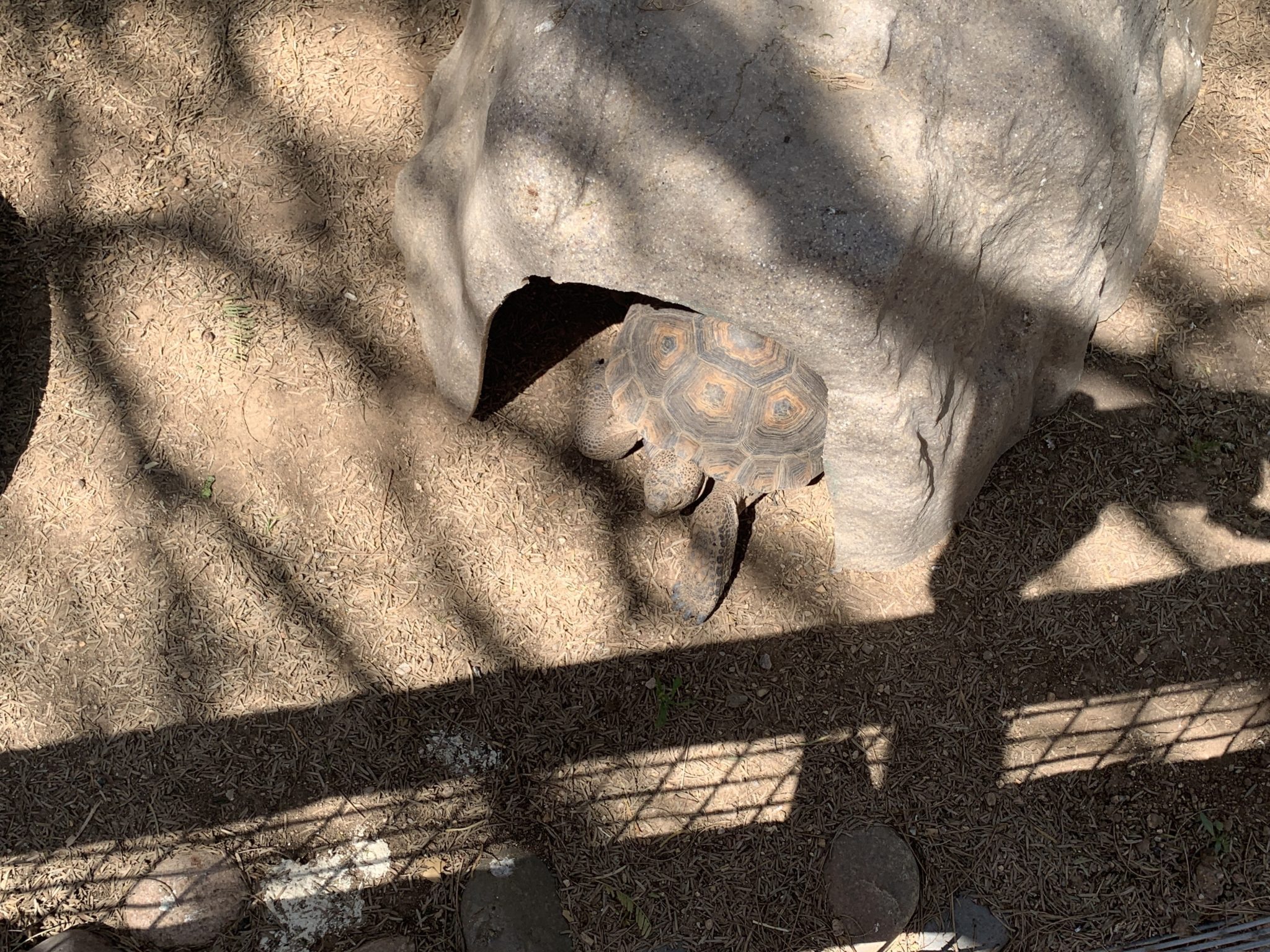
The grumpy, smelly but strangely beloved by some, javelina (pronounced “havalina”).
A waitress in Sedona once told me a story about an unreasonable customer. “He went all javelina on me,” she said.
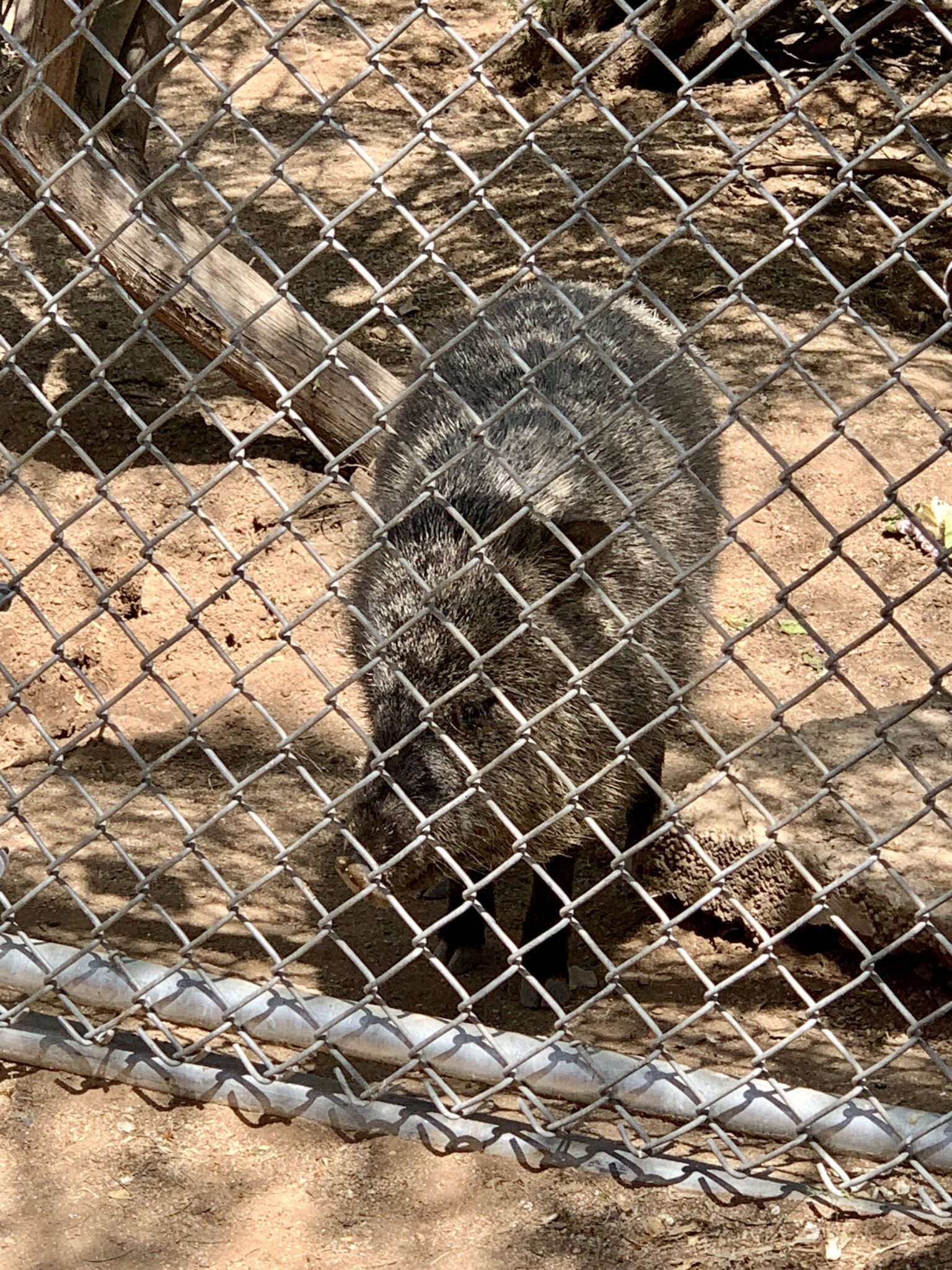
Bobcats look like big kitties. Do not try to pet one. If they like you, they may spray pee on you.
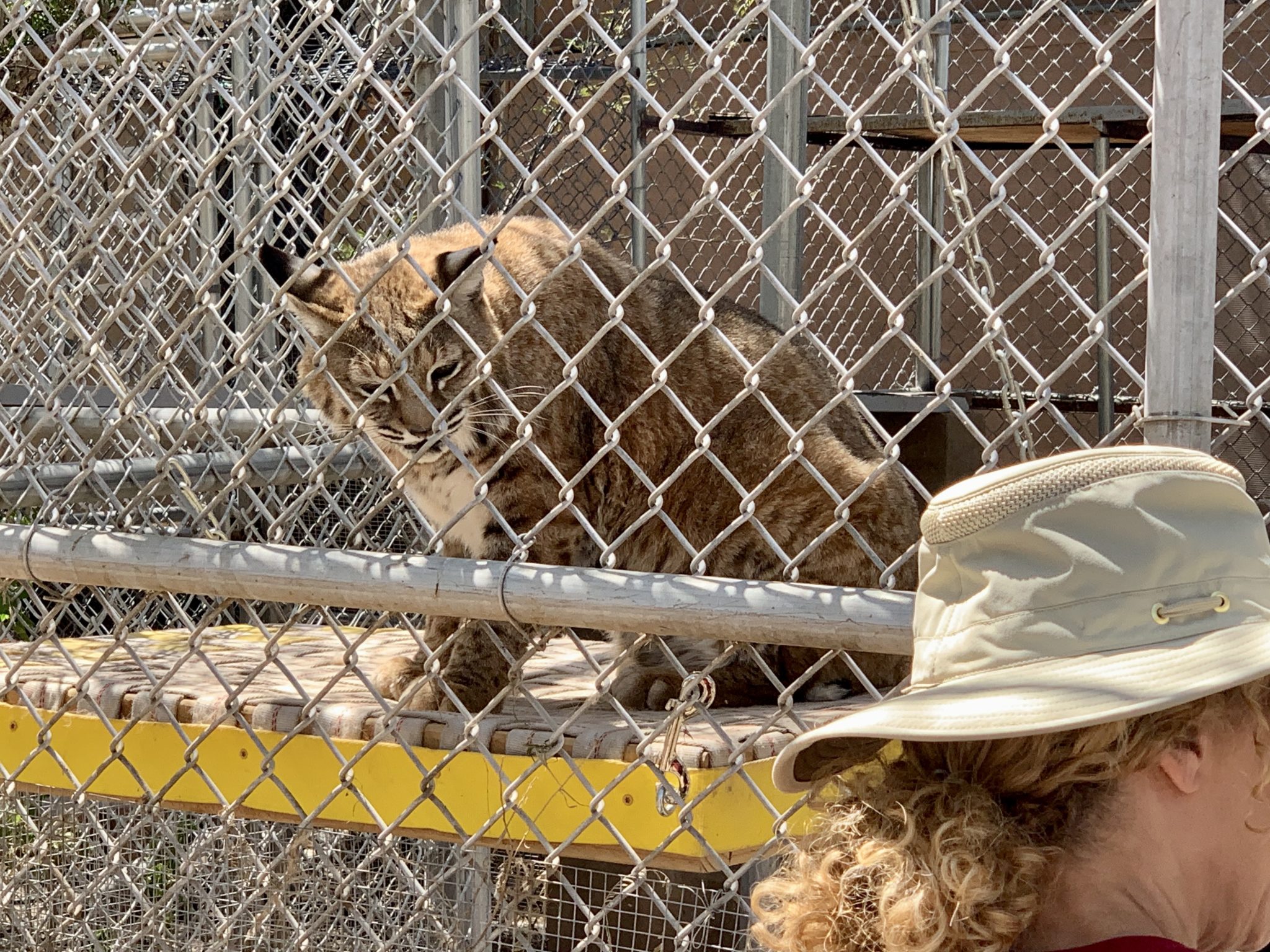
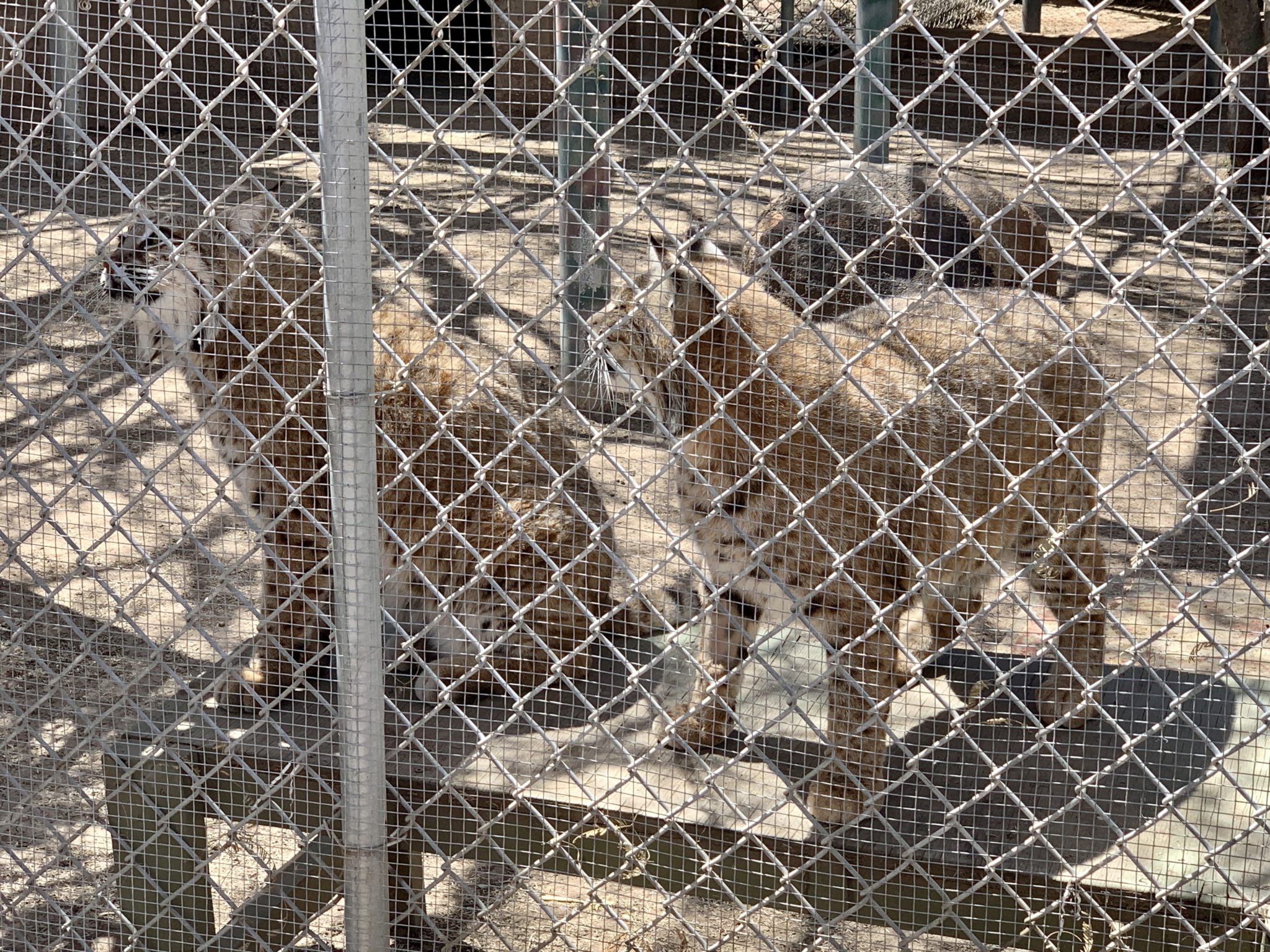
A relative of raccoons, the Coatimundi.
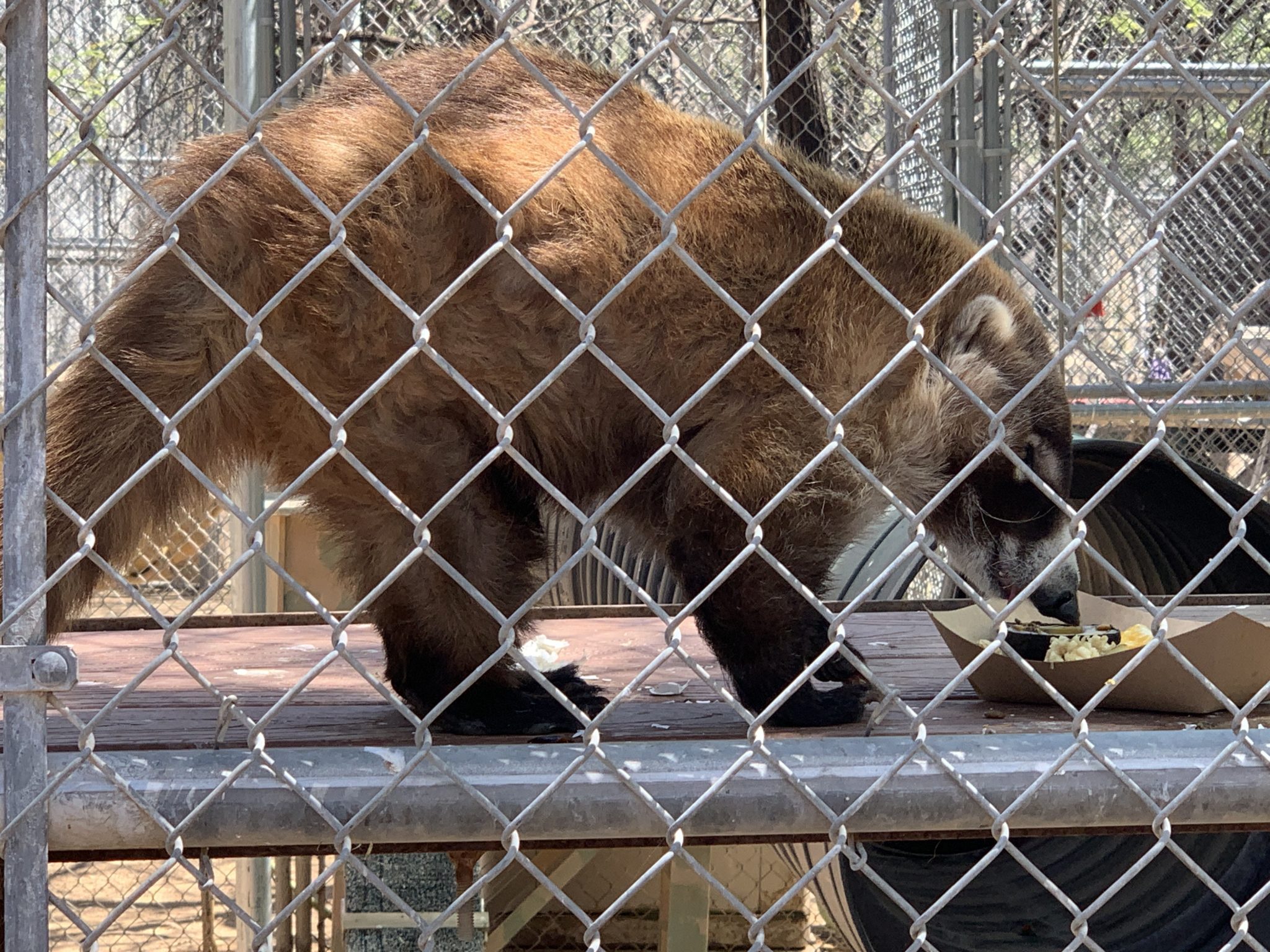
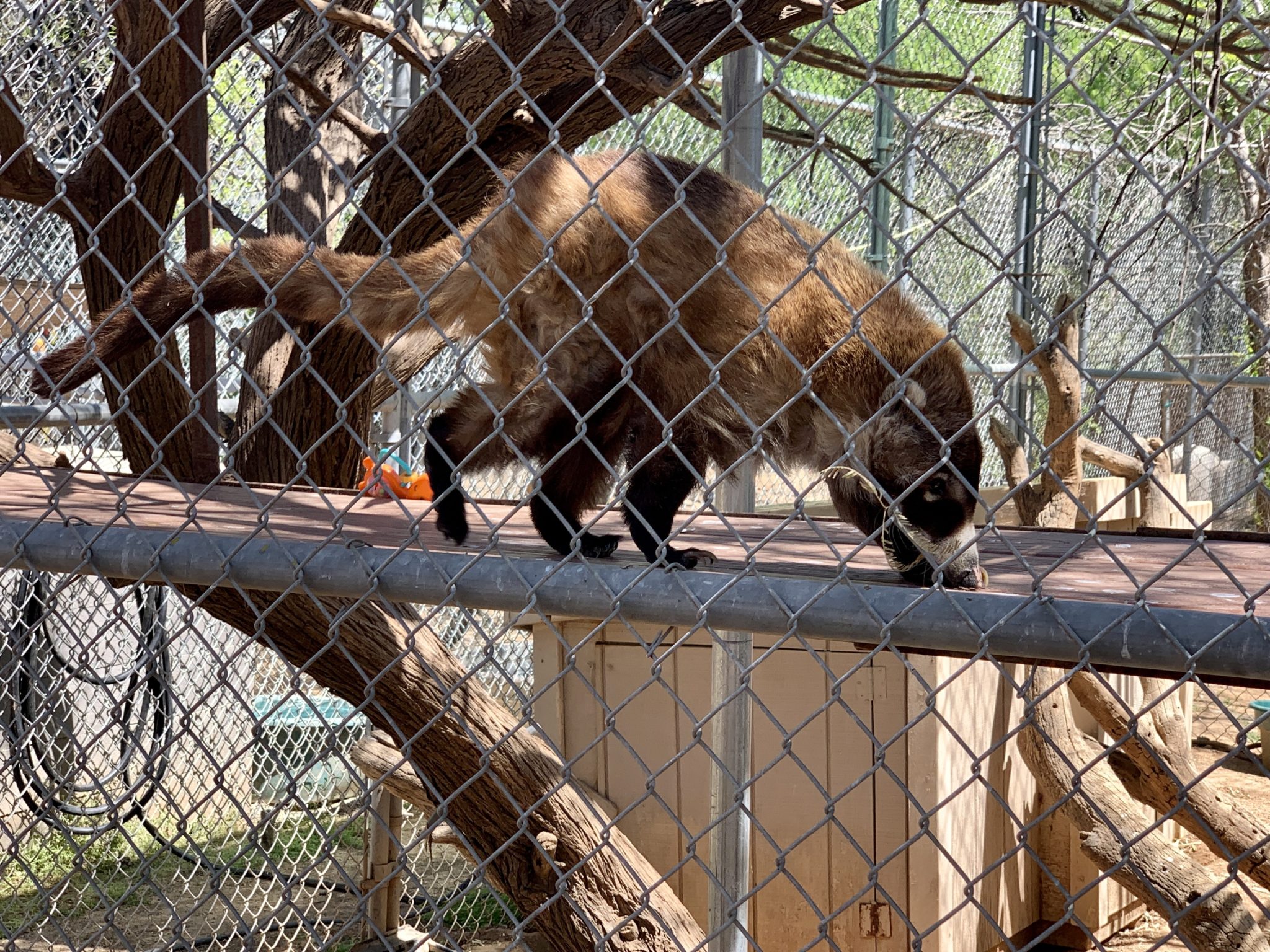
This grey wolf looked magnificent a few minutes earlier. Then he decided to lie down in his pond and cool off.

Goliath, a 20-year-old tortoise, is a real crowd-pleaser. He’s always happy to nosh a carrot but beware if he mistakes brightly painted toenails for fruit. He’s one reason visitors are told to wear closed-toe shoes.
Goliath is a youngster. At 200 pounds, he can be hard to stop when he makes up his mind to go somewhere, like out a gate. The underside of his shell is lined with sharp spines, so simply picking him up is not an option. It usually takes a sizable crew to steer him in the desired (theirs, not his) direction.
With a lifespan of over one hundred years, Goliath should have plenty of time to plan his escapes.

